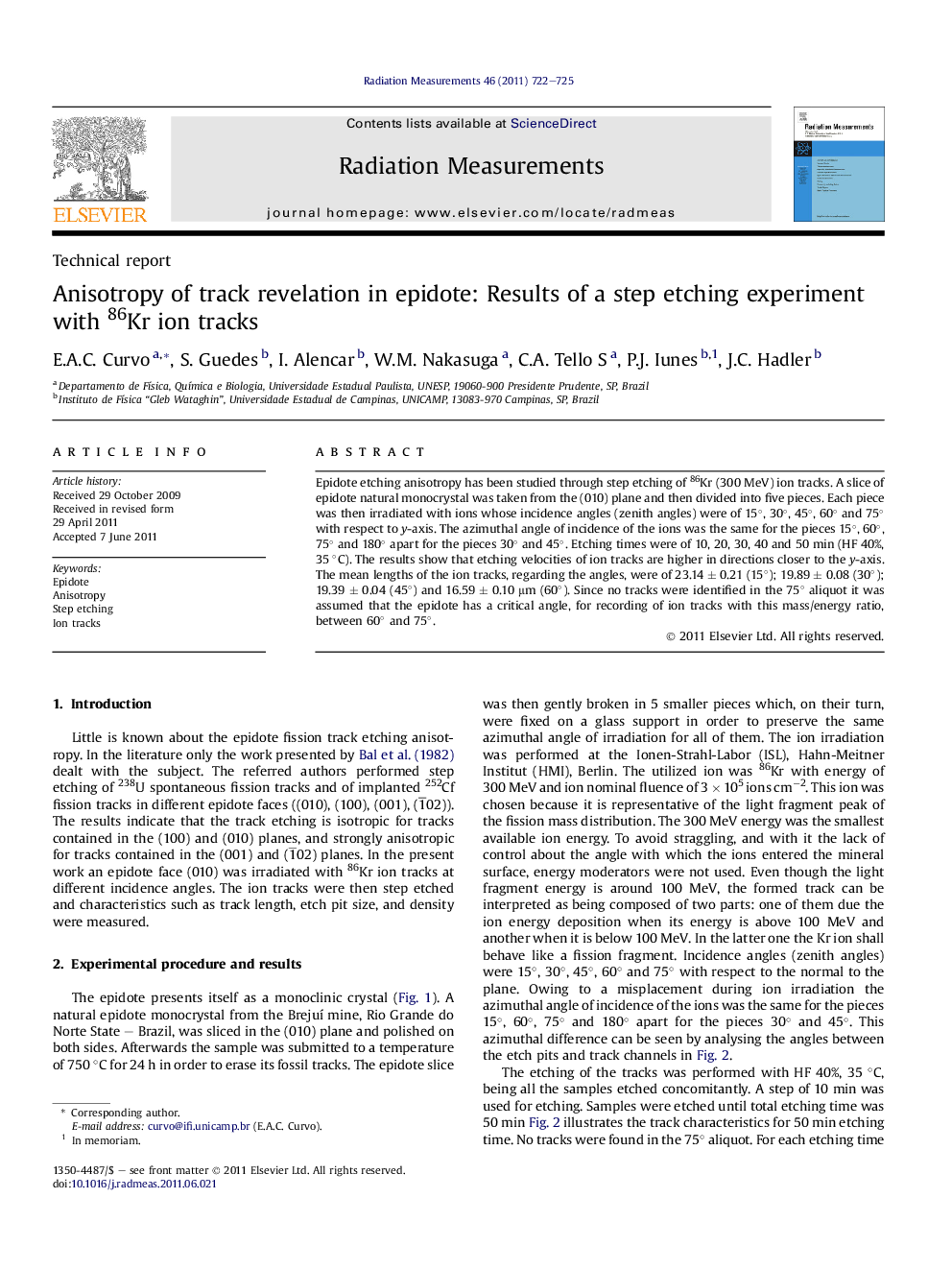| Article ID | Journal | Published Year | Pages | File Type |
|---|---|---|---|---|
| 1885200 | Radiation Measurements | 2011 | 4 Pages |
Epidote etching anisotropy has been studied through step etching of 86Kr (300 MeV) ion tracks. A slice of epidote natural monocrystal was taken from the (010) plane and then divided into five pieces. Each piece was then irradiated with ions whose incidence angles (zenith angles) were of 15°, 30°, 45°, 60° and 75° with respect to y-axis. The azimuthal angle of incidence of the ions was the same for the pieces 15°, 60°, 75° and 180° apart for the pieces 30° and 45°. Etching times were of 10, 20, 30, 40 and 50 min (HF 40%, 35 °C). The results show that etching velocities of ion tracks are higher in directions closer to the y-axis. The mean lengths of the ion tracks, regarding the angles, were of 23.14 ± 0.21 (15°); 19.89 ± 0.08 (30°); 19.39 ± 0.04 (45°) and 16.59 ± 0.10 μm (60°). Since no tracks were identified in the 75° aliquot it was assumed that the epidote has a critical angle, for recording of ion tracks with this mass/energy ratio, between 60° and 75°.
► Epidote etching anisotropy has been studied through step etching of ion tracks. ► Characteristics such as track length, etch pit size, and density were measured. ► Etching velocities of ion tracks are higher in directions closer to the y-axis. ► Regarding the studied plane (010) the etch pits are parallel to the x-axis direction. ► Optical characteristics of fission and ion tracks in epidote are presented.
